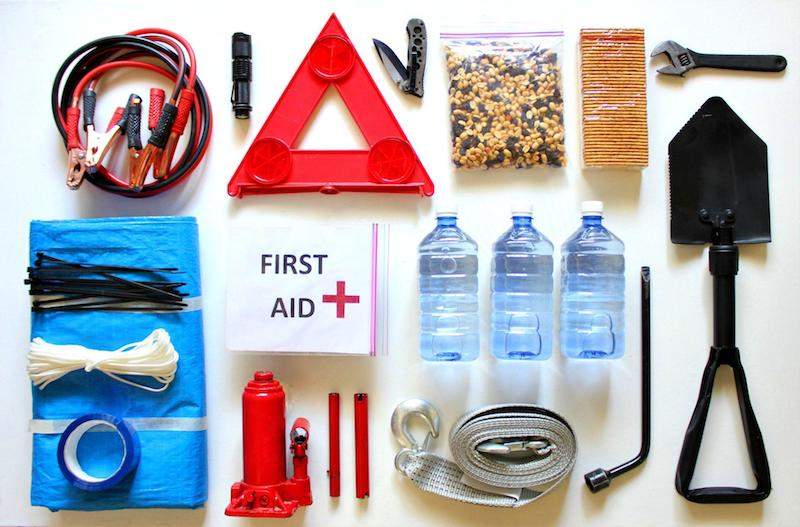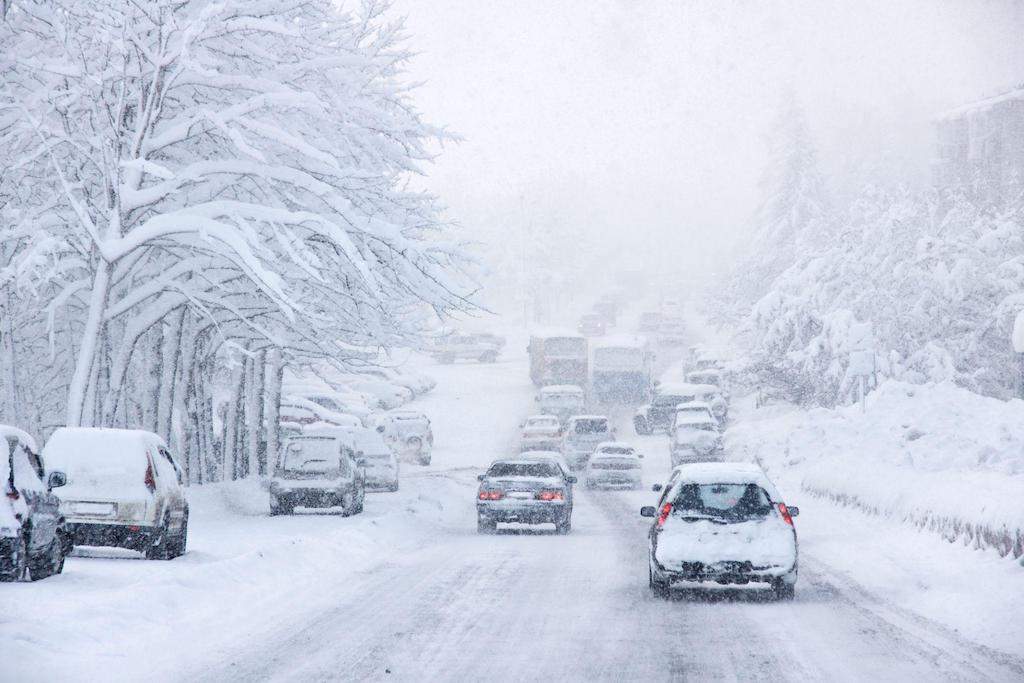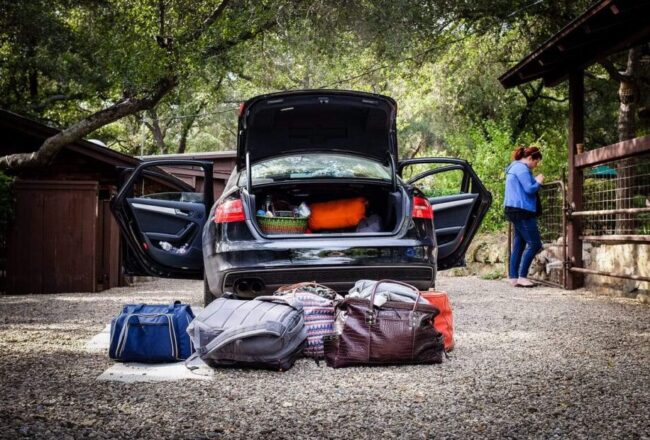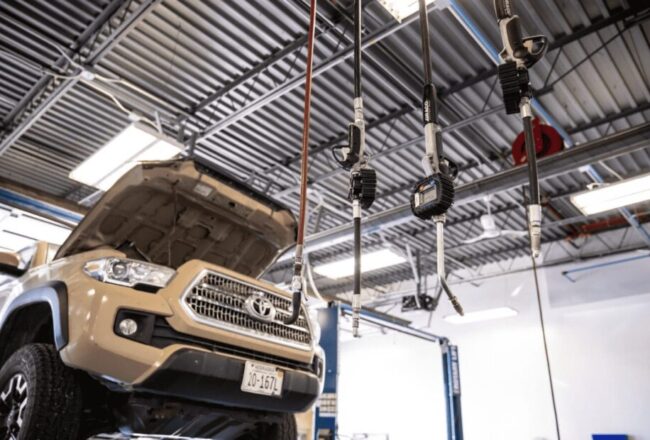Winter can bring plenty of festivities and joy, but it can also come with extreme weather conditions — snow, sleet, ice, etc. — that can make navigating the road challenging. As the colder months settle in, it’s important to prioritize safety behind the wheel. The tips below can help enhance your safety and ensure a smoother journey during the season.
Prepare Your Vehicle
As winter approaches, ensuring that your vehicle is ready to handle colder temperatures, icy roads, and snowy conditions is crucial. Here are some tips on how to winterize your car:
- Examine your tires: Use a tire tread depth gauge and check if your tires have adequate tread depth for proper traction. If the tread depth is at or below 2/32”, replace them with new tires. If you live in an area with extreme winter conditions, consider getting winter tires to help you navigate the weather.
- Check tire pressure regularly: Tire pressure can decrease by about 1 psi (pounds per square inch) for every 10-degree temperature drop. Regularly check your tire pressure and refill your tires as needed.
- Test your battery: Winter can significantly impact your battery’s performance, so test it to ensure that it’s in working condition. If necessary, you may need to clear corrosion from the terminals or replace the battery altogether.
- Inspect radiator fluid: Also known as antifreeze or coolant, this fluid helps prevent your engine from freezing in extreme cold. Inspect the reservoir to see if there’s enough fluid. If the level is low, top it off with more fluid. If the fluid looks contaminated, flush it out and refill the reservoir with new radiator fluid.
- Consider switching oil: It’s important to keep up with your oil changes, regardless of the season. However, if you live in an area with extreme winter conditions, consider switching to an oil with a lower viscosity that performs better in colder weather.
Adjust Your Driving Habits
Driving in the snow and ice can be daunting, but by taking the right precautions and changing your driving habits, you can do it safely. Consider some of these tips when you’re behind the wheel:
- Slow down: Reducing your speed allows for better control and reaction time on icy or snow-covered roads.
- Increase following distance: It takes longer to slow down on icy roads, so increase your following distance to five to six seconds to account for these longer stopping distances.
- Be gentle: Avoid sudden movements like sharp turns or abrupt stops. Gentle maneuvers help maintain better traction on the road. Accelerate gently to avoid wheel spin, and decelerate gradually to prevent skidding
- Use your brakes cautiously: Avoid slamming on your brakes, as this can cause skidding. If your vehicle has anti-lock brakes (ABS), apply steady pressure and let the system do its job.
- Pay attention to sliding: If you’re sliding, steer in the direction you want to go and avoid sudden movements.
- Watch out for bridges, overpasses, and shaded spots: Be particularly cautious on bridges, overpasses, and shaded areas, as these are more prone to ice accumulation.
- Use lower gears: Consider utilizing lower gears to reduce the risk of skidding when descending hills.
Enhance Visibility
Winter weather often brings reduced visibility due to snow, sleet, and fog, so it’s crucial to prioritize clear sightlines for a safe driving experience. Start by checking and replacing your windshield wipers if needed, ensuring they can effectively clear away rain, snow, and sleet. It’s also a good idea to check your windshield wiper fluid and top it off with a winter-grade solution that won’t freeze.
Next, check and test all exterior lights, including headlights, tail lights, signal markers, and hazard lights. If one or more of the bulbs is burnt out, replace them immediately. Before driving, remove debris from your headlights, tail lights, and side mirrors to ensure visibility. Also, consider turning on your headlights during the day to improve visibility for you and other drivers.
If you encounter fog, drive cautiously and use your vehicle’s fog lights, if available. Additionally, consider applying an anti-fog solution to your interior windows to prevent condensation.
Be Prepared for Emergencies
Preparing for emergencies provides peace of mind and allows you to handle unexpected situations effectively during your winter treks. Consider packing an emergency kit with the following items:
- Blanket
- Extra warm clothing
- Flashlight with spare batteries
- Water and non-perishable snacks
- Small snow shovel
- Matches or lighter
- Jumper cables or portable jump starter
- First aid kit
- Ice scraper
- A portable phone charger
- Traction aids, like salt or kitty litter

Additionally, make sure you have a roadside assistance contact readily available. Many car insurance providers offer roadside assistance, so check with your insurer to see if they provide this service.
Stay Informed and Plan Ahead
Planning ahead and staying informed will help ensure a safer, more predictable winter driving experience. Here are some tips to keep in mind:
- Check weather updates and road reports to anticipate potential challenges.
- Use a navigational system to help you plan a safe route.
- If a storm is forecasted, consider delaying your trip or choosing a safer time to travel.
- Share your travel plans with someone, informing them of your route and expected arrival time.
Importance of Winter Driving Safety Education
Learning about proper vehicle maintenance and the significance of adjusting driving habits can make a substantial difference in preventing accidents and mishaps during winter travel. Additionally, knowing how to respond to emergencies, interpret weather forecasts, and plan routes effectively adds an extra layer of preparedness. However, accidents can still happen, so you want to make sure you have adequate auto insurance to protect you in those situations. If you’re looking for a new policy, consider shopping and comparing quotes from providers that offer reliable, affordable car insurance.




